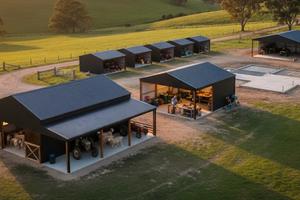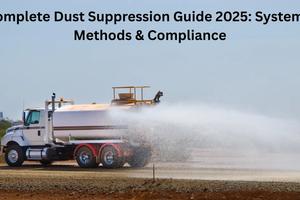Discover Hunting: Crucial Tips Covering Regulations, Equipment, Safety, And Community

Key Takeaways
Essential insights to remember
Understanding hunting regulations and licensing requirements is essential before your first hunt
Proper equipment selection and knowledge of your target species significantly improves hunting success
Safety should always be the top priority, including firearm handling, emergency preparedness, and communication
Joining a hunting community provides valuable mentorship and enhances the overall experience
Physical preparation and practicing tracking skills are crucial for hunting success in various conditions
Introduction: Discover the Thrill of Hunting
Venturing into the world of hunting opens a gateway to primal connections with nature that few other outdoor activities can match. For the uninitiated, hunting represents more than merely pursuing game—it's an immersive journey that combines strategy, patience, and ancient skills refined over millennia. The surge in "adult-onset hunters" (those discovering hunting later in life) demonstrates how this time-honored tradition continues to captivate new enthusiasts seeking authentic outdoor experiences. 🌲
Why consider hunting?
Beyond the obvious reward of ethically sourced protein, hunting offers profound benefits:
- Conservation impact: Hunters contribute over $1.6 billion annually toward wildlife management through licenses and fees
- Ecosystem understanding: Firsthand experience with predator-prey relationships and habitat requirements
- Self-sufficiency skills: Learning to provide sustenance independent of commercial food systems
- Mental rejuvenation: Studies show nature immersion significantly reduces stress hormones
““"In a world increasingly disconnected from natural processes, hunting reconnects us to ancient rhythms and responsibilities."
The learning curve for new hunters might seem steep, but breaking down the journey into manageable steps makes it accessible to anyone with genuine interest. This guide will walk you through essential knowledge areas—from regulations and equipment to field techniques and ethical considerations—creating a roadmap for your hunting discovery.
Whether driven by culinary interests, conservation ethics, or the simple desire to challenge yourself, hunting offers rewards proportionate to the effort invested. As we explore these ten vital tips, remember that hunting excellence isn't measured solely by harvest success, but by the depth of connection forged with wild places and processes. 🏹
Understanding Hunting Regulations
Before you set foot in the wilderness, familiarize yourself with local hunting laws and regulations. This includes understanding the use of equipment, like using reloading primers in Canada, which is essential for a successful and legal hunt. Regulations vary by region, so ensure you're well-informed. It's not just about legality; it's about respecting the ecosystem and ensuring sustainable hunting practices. Check for specific season dates, licensing requirements, and any restrictions on hunting areas or types of game.
Navigating the labyrinth of hunting regulations is perhaps the most crucial first step for any aspiring hunter. These rules aren't arbitrary bureaucracy—they represent decades of conservation science and ethical considerations designed to protect wildlife populations and ensure sustainable harvests for future generations. 📚
Licensing Requirements
Before setting foot in the field, you must obtain the proper credentials. The licensing structure varies significantly by location:
- Basic hunting license: The foundation of legal hunting
- Species-specific tags: Required for harvesting certain animals (deer, elk, turkey)
- Endorsements: Additional certifications for special hunting methods or areas
- Hunter education certification: Mandatory in most jurisdictions for first-time license applicants
““"A license is not just legal permission—it's your contribution to conservation funding and wildlife management."
For most beginners, completing a hunter education course is mandatory. These comprehensive programs cover firearm safety, wildlife identification, ethical considerations, and local regulations. Many states now offer online options for the classroom portion, making this more accessible than ever. 🖥️
Understanding Seasons and Zones
Hunting regulations divide the year into carefully calculated seasons based on animal breeding cycles, population dynamics, and traditional hunting periods. The complexity increases with:
Zone-Specific Regulations
Different geographic areas within a state often have unique:
- Season dates
- Bag limits
- Method restrictions
- Access requirements
Ethics Beyond Regulations
The most respected hunters adhere to a code that extends beyond written laws. This includes:
- Fair chase principles: Giving animals reasonable escape opportunities
- Clean, humane harvests: Making ethical shot selections
- Full utilization: Respecting harvested animals by using as much as possible
- Private property respect: Always securing permission before hunting private land
- Mentorship responsibility: Passing knowledge to the next generation correctly
💡 Pro Tip: Download your state's hunting regulations to your phone before heading afield. Signal can be unreliable in remote areas, and digital regulations are searchable in ways printed booklets aren't.
Understanding regulations isn't merely about avoiding fines—it reflects a commitment to the North American Model of Wildlife Conservation, a framework that has transformed wildlife from nearly decimated to abundant over the past century. By following these guidelines assiduously, you join a community of conservationists ensuring wildlife thrives for generations to come. 🦌
Essential Hunting Gear for Beginners
Embarking on your hunting journey doesn't require emptying your bank account on premium equipment. Strategic investment in quality fundamentals will serve you better than an arsenal of mediocre gear. The discerning novice hunter should focus on reliability, functionality, and versatility when assembling their initial kit. 🎒
Core Equipment Essentials
Every hunter, regardless of target species or hunting method, needs certain foundational items:
- Quality optics: Binoculars are arguably your most important tool, allowing observation without disturbance
- Navigation tools: GPS device with downloadable maps and a backup compass
- Reliable knife: Fixed-blade with 3-4 inch blade for field dressing and processing
- First aid kit: Customized for backcountry emergencies with trauma supplies
- Communication device: Cell phone and potentially a satellite messenger in remote areas
““"The best gear is what you understand how to use effectively under pressure. Practice with your equipment before trusting your hunt to it."
Clothing Systems: The Technical Foundation
Your clothing strategy can make or break a hunt more readily than most other factors. Unlike casual outdoor wear, hunting demands specialized performance:
Layering Strategy
- Base layer: Moisture-wicking materials (merino wool excels here)
- Insulation layer: Adaptable warmth without bulk
- Outer layer: Weather protection with silent materials
- Accessories: Gloves, hats, and neck gaiters appropriate for conditions
❗ Critical Consideration: Hunting-specific clothing incorporates camouflage patterns and scent-control technologies, but more importantly, produces minimal noise when moving through brush.
Weapon Selection for Beginners
The eternal debate between firearm and bow hunting deserves careful consideration:
Firearms for New Hunters
- Versatility: The .308 Winchester or 6.5 Creedmoor offers manageable recoil and effectiveness on various game
- Learning curve: Shorter than archery but requires dedicated practice
- Season length: Typically shorter than archery seasons
- Range advantage: Ethical shots possible at greater distances
Archery Considerations
- Season benefits: Longer seasons and often during prime wildlife activity periods
- Challenge factor: Requires closer approach and more woodsmanship
- Practice commitment: Demands consistent year-round training
- Equipment options: Traditional bows offer simplicity while compounds provide mechanical advantage
💭 Philosophical Consideration: Your choice of weapon should align with your hunting philosophy and physical capabilities, not merely what others recommend.
Remember that equipment acquisition should be gradual—start with versatile essentials and expand your collection as experience reveals your specific needs. The most successful hunters often carry less gear than novices, having learned what truly matters through field experience. Focus on mastering the use of fewer, higher-quality items rather than accumulating specialized gadgets that rarely leave your pack. 🏆
Choosing Your Hunting Method
Selecting the right hunting method isn't merely about personal preference—it's about matching your approach to your target species, physical capabilities, available time, and ethical considerations. Each technique demands different skills and offers unique rewards for those willing to master its nuances. 🎯
Still Hunting vs. Spot-and-Stalk
These active hunting methods represent opposite ends of the movement spectrum:
Still Hunting
Still hunting, despite its misleading name, involves slow, deliberate movement through habitat:
- Pace: Measure progress in yards per hour, not miles
- Observation ratio: Spend 90% of time looking, 10% moving
- Terrain advantage: Excels in dense cover where visibility is limited
- Physical demand: Moderate but requires exceptional patience
““"The still hunter's greatest asset is discipline—the willpower to move more slowly than seems necessary."
Spot-and-Stalk
This western hunting tradition combines long-range observation with strategic approaches:
- Equipment intensive: Requires quality optics and physical stamina
- Terrain advantage: Open country with elevation changes
- Learning curve: Demands understanding of terrain, wind, and animal behavior
- Success rate: Typically lower but offers tremendous satisfaction
⚡ Tactical Insight: For beginners, a hybrid approach often works best—use spotting techniques in morning and evening, with still hunting during midday hours when animal movement decreases.
Stand Hunting Fundamentals
Perhaps the most accessible method for beginners, stand hunting positions you in likely travel corridors:
Types of Hunting Stands
- Tree stands: Elevated platforms providing visibility and scent advantage
- Ground blinds: Concealment structures at ground level
- Natural blinds: Using existing terrain features and vegetation
Calling and Decoying Strategies
Although intimidating to beginners, vocalization and visual attraction techniques can be extraordinarily effective:
Getting Started with Game Calls
- Start simple: Master basic calls before attempting complex sequences
- Species-specific: Each animal responds to different sounds and cadences
- Practice protocol: Never practice where you hunt
- Realistic expectations: Calling rarely brings immediate results—patience is crucial
🔊 Learning Approach: Record your practice sessions to compare with professional calling instructional resources, focusing on tone and rhythm rather than volume.
Drives and Pushes
This social hunting method works well for beginners hunting with experienced mentors:
- Group coordination: Requires clear communication and safety protocols
- Terrain reading: Strategic placement based on animal escape routes
- Role flexibility: Alternating as driver and stander builds comprehensive skills
- Ethical considerations: Maintain shot discipline despite increased excitement
The method you choose should align with your personal ethos. Some hunters value the heightened challenge of primitive methods, while others prioritize harvest success and efficiency. There's no universally "best" approach—the ideal method is one that provides the experience you seek while respecting your quarry and allowing for clean, ethical harvests. As your skills develop, you'll likely incorporate elements from multiple techniques into your personal hunting style. 🌄
Learning About Your Prey
Understanding your quarry transcends basic species identification—it requires immersion in their biology, behavior, and ecological relationships. Successful hunters don't merely find animals; they anticipate their movements by thinking like their prey. This knowledge represents the cornerstone of ethical and effective hunting. 🦌
Behavior Patterns and Daily Routines
Wild animals operate according to predictable yet flexible schedules:
Crepuscular Activity Cycles
Most game species are most active during dawn and dusk transitions:
- Morning patterns: Often moving from feeding areas to bedding sanctuaries
- Evening routines: Emerging from secure cover toward food sources
- Weather influences: Activity shifts earlier or later depending on conditions
- Seasonal variations: Day length and breeding cycles alter typical schedules
““"The difference between seeing game and not seeing it often comes down to being in the right place during the crucial 20 minutes of prime activity."
Identifying Signs and Reading the Land
Animals leave evidence of their presence for those trained to recognize it:
Primary Animal Sign Categories
- Tracks: Reveal species, size, direction, and recency
- Scat: Indicates diet, health status, and population density
- Browse/feed sign: Shows food preferences and feeding patterns
- Rubs and scrapes: Territorial and breeding behaviors (especially ungulates)
- Beds and trails: Habitat preferences and travel corridors
⏰ Timing Insight: The freshness of sign matters more than quantity—recent evidence of a few animals trumps abundant but old sign every time.
Seasonal Movements and Migrations
Game animals adjust locations and behaviors significantly throughout the year:
Critical Seasonal Transitions
- Spring dispersal: Winter herds breaking into smaller groups
- Summer patterns: Focused on nutritional recovery and fawn/calf rearing
- Fall breeding cycles: Dramatic behavior changes during rut periods
- Winter survival strategies: Congregation in thermal cover and protected areas
💡 Scientific Application: Understanding photoperiodism (how daylight length triggers behavioral changes) helps predict major movement periods more accurately than calendar dates.
Using Technology to Study Behavior
Modern tools complement traditional observation skills:
Trail Camera Deployment Strategy
- Primary locations: Water sources, natural funnels, feeding areas
- Optimal height: 24-36 inches for most species
- Direction consideration: Avoid east/west orientations causing sun flare
- Checking protocol: Minimize disturbance when retrieving images
💻 Data Management: Create a systematic approach for organizing trail camera intelligence—date, location, weather conditions, and observed patterns should be recorded methodically.
The depth of your species knowledge correlates directly with hunting success. Beyond reading basic guides, consider keeping a hunting journal documenting observations, patterns, and discoveries about your target species. The most illuminating insights often come from personal observation rather than secondhand information. Remember that animal behavior exists on a spectrum—understanding general patterns while recognizing individual variations marks the difference between an animal observer and a true naturalist hunter. 🔍
Mastering Safety Protocols
Safety in hunting isn't merely a recommended practice—it's the non-negotiable foundation upon which all other hunting skills are built. Statistics consistently show that hunting remains safer than many common recreational activities when proper protocols are followed, yet preventable accidents still occur when fundamentals are neglected. Developing safety-first habits from day one ensures you'll enjoy a lifetime of incident-free hunting adventures. 🛡️
Firearm and Bow Safety Fundamentals
The core principles of weapons safety transcend specific hunting methods:
Universal Safety Rules
- Treat every weapon as if it's loaded—always, without exception
- Control your muzzle direction—never point at anything you don't intend to shoot
- Keep your finger outside the trigger guard until ready to fire
- Be certain of your target and what lies beyond it—complete identification is mandatory
- Maintain control of your weapon—secure during transport and in the field
““"No animal is worth compromising safety. The best hunters prioritize safety over opportunity every time."
Field Safety Beyond Your Weapon
Hunting safety extends far beyond handling firearms or archery equipment:
Environmental Safety Considerations
- Tree stand safety: Always use a safety harness—falls represent the most common hunting accidents
- Terrain navigation: Plan routes considering fitness level and potential hazards
- Weather preparedness: Understand hypothermia and heat exhaustion warning signs
- Water crossings: Assess depth, current, and bottom composition before attempting
⚠️ Critical Statistic: Over 70% of hunting incidents involve preventable factors like unsafe weapon handling, misidentification of targets, or falls from elevated positions.
Emergency Preparedness
Equipping yourself for when things go wrong could be lifesaving:
The Essential Survival Kit
- Navigation backup: Map and compass regardless of GPS availability
- Fire starting: Multiple methods including stormproof matches and ferrocerium rod
- Signaling devices: Whistle, mirror, and high-visibility material
- First aid: Trauma-focused supplies including tourniquets and pressure bandages
- Emergency shelter: Lightweight tarp or emergency bivy
🩹 Medical Insight: Learn to address the three preventable causes of wilderness death: severe bleeding, chest injuries, and hypothermia. Basic training can dramatically improve outcomes in the critical golden hour.
Communication Systems and Protocols
Establish reliable communication practices before they're needed:
- Trip plans: Leave detailed information with trusted non-hunting contacts
- Check-in schedules: Set regular communication windows with clear missed-check protocols
- Emergency contacts: Program relevant numbers (game wardens, land managers, emergency services)
- Signal limitations: Understand where coverage exists in your hunting area
The maturity with which you approach safety directly reflects your respect for hunting as a tradition. Experienced hunters recognize that safety practices aren't restrictions—they're enablers of confidence and focus. When basic safety becomes instinctual, your attention remains precisely where it belongs: on the hunting experience itself, not on managing preventable risks. Make safety your hunting partner on every outing, and it will never fail you. 🌲
Physical and Mental Preparation
The physical and mental demands of hunting often catch newcomers by surprise. Unlike casual outdoor activities, hunting requires specific conditioning, practical skills development, and psychological resilience. Preparing your body and mind before season begins dramatically increases both success rates and overall enjoyment of the experience. 💪
Physical Conditioning for Terrain Challenges
The physical requirements of hunting vary tremendously based on method and location:
Targeted Fitness Development
- Cardiovascular endurance: The foundation for covering ground and recovering from exertion
- Leg strength: Critical for navigating varied terrain and carrying heavy loads
- Core stability: Essential for accurate shooting and pack carrying
- Grip strength: Vital for weapon control and field processing tasks
““"The time to discover your physical limitations is during training, not when you're two miles from your vehicle with an animal down."
Specialized Training Approaches
Generic fitness programs rarely address the specific demands hunters face:
Hunter-Specific Training Protocol
- Loaded hiking: Progressive training with weighted packs on varied terrain
- Rucking: Walking with weight over distance to build functional strength
- Interval training: Mimicking the stop-and-go nature of field movement
- Positional shooting drills: Practicing shots from realistic field positions
🏋️ Training Progression: Begin conditioning at least 12 weeks before your hunt, gradually increasing load weight and terrain difficulty. Focus on recovery capacity—the ability to lower your heart rate quickly during brief rests.
Mental Toughness Development
The psychological aspects of hunting often determine success more than physical capability:
Key Mental Attributes
- Patience: The capacity to remain alert during extended inactive periods
- Resilience: Bouncing back from disappointments and missed opportunities
- Decisiveness: Making ethical shot decisions under pressure
- Adaptability: Adjusting plans when conditions or animal behavior changes
💭 Psychological Practice: Visualize both successful and challenging scenarios before your hunt. Mental rehearsal of difficult situations—weather changes, tracking wounded game, equipment failures—prepares you to handle them effectively when they occur.
Shooting Competence Building
Technical proficiency with your chosen weapon is non-negotiable:
Progressive Shooting Practice
- Foundational accuracy: Mastering the basics in controlled environments
- Field positions: Developing competence in realistic shooting positions
- Physiological stress: Introducing heart rate elevation before shooting
- Environmental factors: Practicing with wind, precipitation, and limited light
🎯 Ethical Standard: Establish your maximum effective range based on demonstrated ability to place shots consistently within vital zones—not based on what your equipment is theoretically capable of achieving.
The junction of physical capability, mental fortitude, and technical skill creates the foundation for ethical and successful hunting. Remember that preparation is progressive—build slowly toward your goals without risking injury or burnout. Each hunting experience, regardless of outcome, should inform your preparation for the next. The most reliable indicator of hunting readiness isn't what you can do once, but what you can do repeatedly under challenging conditions. 🌄
Reading the Land and Weather
Developing the ability to interpret landscape features and weather patterns distinguishes novice hunters from those who consistently find success. This "landscape literacy" involves understanding how topography, vegetation, water sources, and weather interact to influence animal behavior. Like learning a new language, these interpretation skills develop gradually through observation and application. 🗺️
Topography and Animal Movement
The physical features of the landscape create predictable animal travel patterns:
Key Terrain Features
- Saddles: Natural mountain pass depressions that funnel animal movement
- Benches: Flat areas on hillsides that offer easy travel and bedding areas
- Drainages: Natural funnels that provide cover and travel corridors
- Edge habitat: Transitions between habitat types that concentrate animal activity
““"Animals, like humans, prefer the path of least resistance—learn to identify these natural highways and you'll find more game."
Identifying Natural Funnels
These landscape features naturally concentrate animal movement:
- Geographic funnels: Terrain features forcing animals through specific areas
- Vegetative funnels: Dense cover creating preferred travel corridors
- Human-created funnels: Fences, roads, and development altering movement patterns
- Seasonal funnels: Weather-dependent pathways that change throughout the year
🔍 Field Application: When scouting new areas, seek elevated vantage points first. Observe how landscape features connect, imagining how animals would navigate between bedding areas, water sources, and food with minimal energy expenditure.
Wind Patterns and Thermals
Understanding air movement may be the single most crucial skill for close-range hunters:
Wind Behavior Fundamentals
- Prevailing winds: General directional patterns for your hunting region
- Thermal currents: Rising warm air during day, falling cool air at night
- Terrain effects: How geographical features disrupt and channel airflow
- Seasonal shifts: Changes in dominant wind patterns throughout the year
⬆️ Critical Insight: Morning thermals flow uphill as the sun warms the land; evening thermals flow downhill as the land cools. Plan approaches accordingly to prevent your scent from reaching game.
Weather Effects on Game Behavior
Weather changes trigger predictable behavioral responses:
Weather Event Impacts
- Barometric pressure shifts: Increased feeding before pressure drops
- Precipitation: Movement before and after rain/snow events
- Temperature extremes: Activity concentrated during comfort periods
- Seasonal transitions: Dramatic behavior changes during weather shifts
🌡️ Practical Application: Create a hunting journal correlating weather conditions with observed animal activity. Over time, patterns will emerge that allow you to predict prime hunting opportunities based on forecasts.
E-Scouting and Field Verification
Modern technology complements traditional scouting methods:
- Satellite imagery: Identifying habitat transitions and potential hotspots
- Topographic applications: Understanding terrain features before boots-on-ground
- Weather prediction tools: Planning hunts around optimal conditions
- Property boundary systems: Ensuring legal access and identifying pressure points
The integration of map reading skills, weather knowledge, and firsthand observation creates a powerful toolkit for predicting animal location and behavior. Remember that while technology offers tremendous advantages in scouting, nothing replaces direct field observation. The most successful hunters develop intuitive understanding through repeated experiences in the same areas across different conditions and seasons. This accumulated knowledge becomes second nature, allowing quick adaptation to changing conditions during actual hunts. 🌦️
Advanced Hunting Strategies
Elevating your hunting approach from foundational skills to sophisticated techniques separates casual participants from dedicated practitioners. These advanced strategies aren't merely tricks or shortcuts—they represent the accumulated wisdom of generations refined through scientific understanding and field testing. Mastering these approaches transforms challenging hunting situations into consistent opportunities. 🧠
Scent Control Systems
Perhaps no aspect of hunting generates more debate than scent management, yet its importance cannot be overstated:
Comprehensive Scent Strategy
- Personal hygiene: Scent-free soap, shampoo, and deodorant protocols
- Clothing management: Dedicated storage and field-ready washing systems
- Boot discipline: Separate footwear for scouting and hunting
- Equipment treatment: Eliminating foreign odors from gear and accessories
““"Perfect scent control doesn't exist, but reducing your olfactory footprint creates significant advantages in close-quarters hunting scenarios."
Cover and Concealment Tactics
Understanding the distinction between hiding from eyes versus remaining undetected by all senses:
Cover vs. Concealment
- Visual concealment: Breaking up human outline and minimizing movement
- Auditory discipline: Eliminating unnatural sounds through preparation and technique
- Olfactory management: Wind awareness and scent reduction strategies
- Behavioral mimicry: Moving in ways that don't trigger prey animal alarm responses
🥷 Field Technique: When movement is necessary in close proximity to game, synchronize your movements with natural environmental motion—move when wind rustles vegetation or when the animal is distracted by its own movement.
Timing Optimization Techniques
Strategic scheduling dramatically influences encounter rates:
Optimal Timing Factors
- Seasonal peaks: Targeting the breeding season apex for specific species
- Moon phase influence: Understanding how lunar cycles affect feeding patterns
- Weather front exploitation: Hunting before incoming pressure changes
- Hunting pressure avoidance: Scheduling around predictable human activity
⏱️ Counter-Conventional Wisdom: While most hunters focus on dawn and dusk, midday hunting during the rut can be extraordinarily productive as bucks search for does throughout daylight hours.
Adapting to Hunting Pressure
As animals experience hunting pressure, their behavior changes predictably:
Pressure Response Patterns
- Temporal shifts: Moving during darkness or unusual daytime periods
- Spatial adjustments: Utilizing sanctuaries and difficult-access areas
- Behavioral modifications: Increased caution at traditional ambush points
- Group dynamics changes: Altered herd structure and leadership patterns
🔄 Adaptive Strategy: When hunting pressured areas, focus on thick escape cover 100-200 yards from obvious hunting locations—pressured animals often bed down in the first suitable cover rather than traveling extended distances.
Precision Shot Placement
Shot selection represents the culmination of all hunting skills:
Advanced Shot Considerations
- Animal positioning: Understanding optimal angles for vital organ access
- Distant background: Ensuring safe projectile containment
- Follow-through planning: Mentally rehearsing post-shot sequences
- Ethical limitations: Recognizing when to pass on marginal opportunities
The progression from basic to advanced hunting strategies isn't about accumulating tricks—it's about developing deeper understanding of animal behavior, environmental factors, and human influence patterns. The most sophisticated hunters often employ remarkably simple approaches, but apply them with exceptional timing and precision. Remember that advanced doesn't necessarily mean complicated; it often means doing simple things with extraordinary attention to detail and situational awareness. 🎯
Field to Table: After the Harvest
The culmination of a successful hunt isn't the shot—it's the transformation of your harvest into nutritious, ethical sustenance. This critical phase often receives insufficient attention from beginners focused on the pursuit itself. Yet proper field care directly impacts both meat quality and your spiritual connection to the hunting tradition. Handling your harvest with respect and competence honors the animal and completes the field-to-table cycle. 🍽️
Field Dressing Fundamentals
The clock starts ticking immediately after the animal is down:
Initial Field Care Sequence
- Confirm the animal is deceased: Approach cautiously, watching for eye movement
- Express gratitude: Many hunters observe a moment of respect—a tradition worth preserving
- Tag immediately: Fulfill legal requirements before processing begins
- Position for drainage: Place animal on slight incline before opening the body cavity
““"How you handle an animal after harvest speaks volumes about your hunting ethics. Efficient, respectful processing is the mark of a complete hunter."
Temperature Management Essentials
Heat is the enemy of meat quality and safety:
Cooling Strategies
- Body cavity opening: Remove internal organs promptly to release heat
- Skinning considerations: Balance cooling benefits against contamination risks
- Quarter separation: Divide larger animals to accelerate cooling
- Airflow maximization: Create circulation around meat surfaces
🧊 Preservation Technique: In warm weather, pack body cavities with ice bags or snow if available. For extended pack-outs, consider shaded meat poles that maximize airflow while protecting from insects and contaminants.
Butchering Approaches for Beginners
The transition from field to kitchen requires systematic approach:
Butchering Strategy for New Hunters
- Research animal-specific anatomy: Study muscle groups before hunting
- Consider initial processing options: Field breakdown vs. whole carcass transport
- Prepare proper equipment: Sharp, appropriate knives and clean work surfaces
- Document your process: Take photos to improve future efforts
🔪 Skill Development: Consider processing your first harvest alongside an experienced mentor. Alternatively, work with a processor for your initial animal while observing their techniques for future application.
Preservation and Storage Methods
Proper preservation extends your enjoyment of the harvest:
Storage Optimization
- Aging considerations: Balancing flavor development against spoilage risk
- Freezer preparation: Proper wrapping techniques to prevent freezer burn
- Alternative preservation: Smoking, canning, dehydrating, and other methods
- Labeling systems: Tracking cuts and harvest dates for rotation management
The field-to-table process represents both the conclusion of your hunt and the beginning of your culinary adventure. Many hunters discover that their appreciation for wild game evolves through careful processing and creative preparation. The effort invested in proper field care and processing pays dividends with every meal shared with family and friends. Remember that this aspect of hunting connects you most directly to ancestral traditions—the transformation of wild harvest into nourishment that sustains community. 🦌
Building Your Hunting Community
The journey into hunting need not be a solitary endeavor—in fact, connection with fellow hunters accelerates learning, enhances safety, and enriches the entire experience. While the stereotypical image of a hunter might suggest a lone figure in the wilderness, the reality is that hunting thrives as a communal tradition passed through generations and across diverse groups. Creating your hunting network provides practical benefits and deeper meaning to your outdoor pursuits. 👥
Finding Mentors and Hunting Partners
The guidance of experienced hunters dramatically shortens the learning curve:
Mentor Relationship Development
- Local conservation organizations: Chapters often have mentorship programs
- Hunter education instructors: Many volunteer additional time with new hunters
- Specialty retailers: Employees at hunting shops frequently share knowledge
- Online communities: Digital platforms connecting beginners with experienced hunters
““"Behind every self-sufficient hunter stands a line of mentors who shared their knowledge. The tradition demands we eventually pay this forward."
Navigating Hunter Relationships
The hunting community has unique etiquette and expectations:
Building Respectful Hunting Connections
- Information reciprocity: Offer value in exchange for knowledge
- Area respect: Never pressure others for specific locations
- Effort demonstration: Show willingness to put in work before seeking shortcuts
- Gratitude expression: Acknowledge help received genuinely and specifically
🤝 Partnership Principle: The best hunting relationships are built on mutual respect, shared values, and complementary skills. Seek partners whose hunting philosophy and ethical standards align with yours.
Digital Resources and Communities
Modern technology creates unprecedented access to collective hunting wisdom:
Navigating Online Hunting Resources
- Podcasts: Immersive learning during commutes and workouts
- Forums: Question-specific knowledge from diverse perspectives
- Video content: Visual instruction for practical skills
- Social platforms: Connection with like-minded hunters regionally and globally
📱 Digital Etiquette: When joining online communities, begin by observing established norms. Contribute value before asking for help, and always demonstrate respect for differing hunting philosophies and techniques.
Conservation Organization Involvement
Participation in wildlife conservation connects you to the broader hunting tradition:
Organizational Engagement Options
- Habitat improvement: On-the-ground projects restoring wildlife environments
- Policy advocacy: Supporting science-based wildlife management
- Hunter recruitment: Helping introduce newcomers to ethical hunting
- Scientific contribution: Participating in wildlife surveys and research
The development of your hunting community extends the experience beyond the field. Through these connections, hunting transforms from merely an activity into a lifestyle and identity. The collective knowledge, shared experiences, and mutual support create a rich tapestry that enhances your appreciation for the tradition. Remember that the strength of the hunting community depends on individuals committed to ethical conduct, conservation principles, and the preservation of hunting heritage for future generations. 🌲
Conclusion: The Lifelong Journey
Embarking on your hunting adventure marks the beginning of a perpetual journey rather than a destination to be reached. The path of discovery unfolds differently for each hunter, shaped by personal values, regional traditions, and individual experiences. As you progress from novice to practitioner, remember that even the most accomplished hunters continue learning with every season. This lifelong evolution keeps the pursuit fresh and meaningful decade after decade. 🏹
Setting Realistic Expectations
New hunters often measure success solely through harvest, but mature perspectives embrace broader metrics:
Success Beyond the Harvest
- Knowledge acquisition: Each outing builds your understanding regardless of outcome
- Skill development: Progressive improvement in woodsmanship and technique
- Nature connection: Deepened relationship with natural systems and cycles
- Personal growth: Patience, resilience, and self-reliance cultivated through challenges
““"The true measure of a hunting season isn't pounds of meat or inches of antler, but moments of connection and lessons carried forward."
The Conservation Legacy
Hunting's future depends on participants embracing its conservation foundations:
Hunter's Conservation Responsibility
- Habitat protection: Supporting land preservation and improvement
- Wildlife advocacy: Understanding the North American Model of Wildlife Conservation
- Ethical representation: Portraying hunting positively through responsible conduct
- Financial contribution: Recognizing how license fees and excise taxes fund wildlife management
🌱 Participation Impact: Each hunting license purchased directly funds conservation efforts, making participation itself an act of environmental stewardship. This unique "user-pays" system has restored countless species from near-extinction.
Embracing the Learning Process
The education never ends—which makes hunting perpetually engaging:
Continuous Development Approaches
- Season reflection: Systematic analysis of each hunting season's lessons
- Cross-pollination: Learning from different hunting traditions and cultures
- Skill expansion: Adding new methods, species, or regions over time
- Teaching engagement: Deepening understanding through mentoring others
📚 Development Insight: Create annual learning objectives beyond harvest goals. Whether mastering a new calling technique, exploring unfamiliar terrain, or perfecting a processing method, intentional skill development maintains engagement regardless of hunting success.
Celebrating the Complete Experience
The fully realized hunting journey encompasses celebration of the entire process:
The Complete Hunting Experience
- Anticipation: The planning, preparation and expectation
- Immersion: Deep presence in wild places and natural processes
- Challenge: Testing personal limits and adaptability
- Connection: Engagement with tradition, community, and sustenance
- Gratitude: Appreciation for the privilege of participation
Discovering hunting opens a gateway to experiences increasingly rare in modern life—direct participation in natural cycles, self-reliance through ancient skills, and connection to food sources. As you progress in your hunting journey, remember that each experience in the field—successful harvest or not—contributes to your development as a hunter and deeper understanding of our place in the natural world. The path is challenging but profoundly rewarding, offering a lifetime of growth, connection, and purpose for those who approach it with respect and commitment. 🌄





